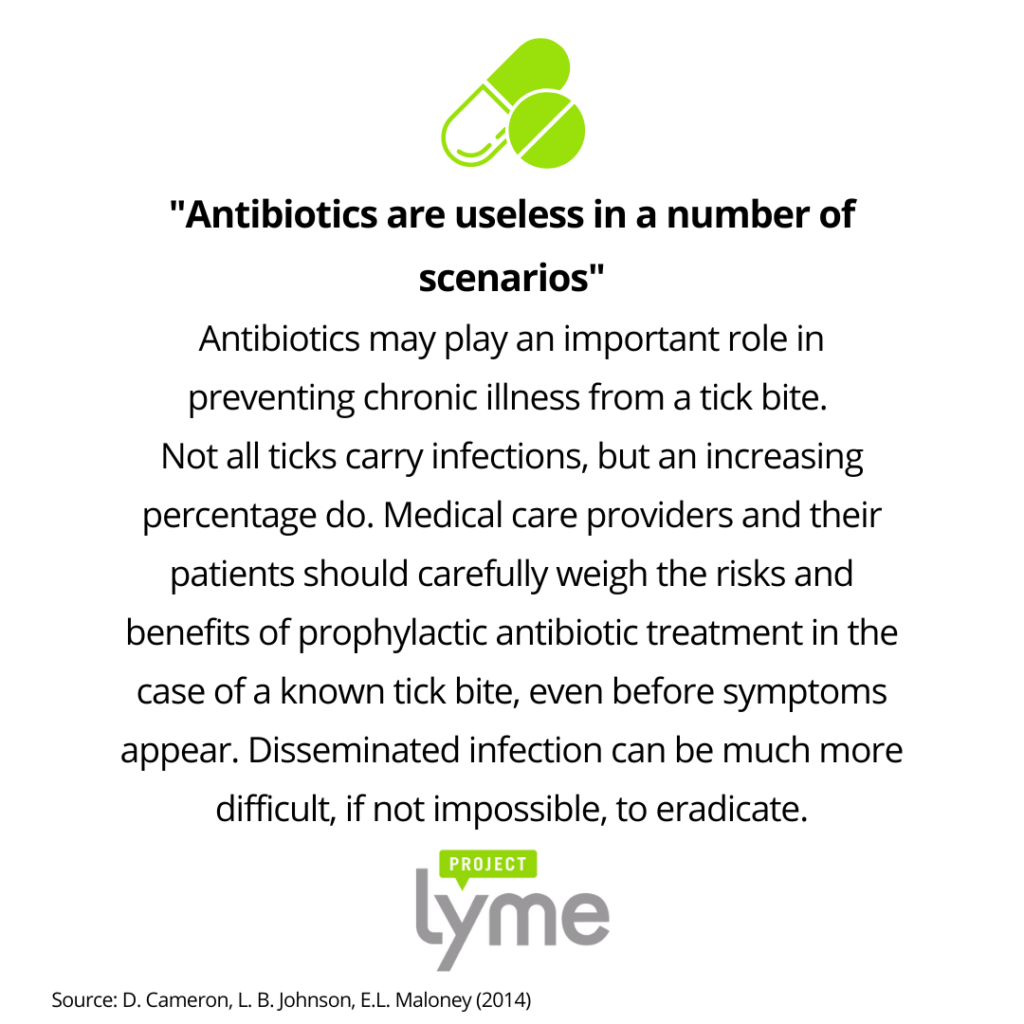Tick Bite Fallacy

There are no qualifiers to the interviewed doctor’s statement, which is an essential piece for determining the likelihood of disease transmission. The type of tick, the length of attachment, the way it was removed, and the types of diseases it was carrying all influence the chance of infection.
For example, according to this study, 50 percent of ticks are infected with at least one tick-borne infection Northeast, Midwest, and West Coast. This research published in 2023 found that “the infection rate of B. burgdorferi, A. phagocytophilum, and B. microti was 39%, 8%, and 7% in adult ticks; 23%, 6%, and 5% in nymphal ticks, respectively”, showing that the idea that most bites won’t cause issues may be slightly understating the problem.
Removal Advice

If you find a tick on your body, do not follow the instructions given in the Washington Post article. Project Lyme offers a resource on our website that shows you how to properly remove a tick, including step-by-step instructions and a video. We also offer a list of tick-testing locations so that you can have a lab confirm the type of infections the tick may have been carrying.
Treatment Guidance

Using antibiotics as a prophylactic can be an important part of preventing illness from a tick bite. According to the International Lyme and Associated Disease Society, it is too early to test for Lyme disease in the first days following a tick bite, but during that time you may still need to seek treatment. You can learn more about ILADS treatment recommendations here and Project Lyme also offers a treatment resource to educate patients on how medical providers typically treat tick-borne diseases with antibiotics.





